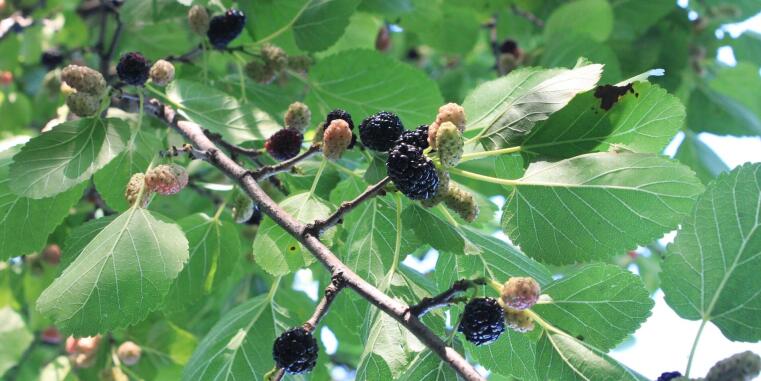

botanical background
order: Rosales
family: Moraceae
genus: Morus
species: white mulberry (Morus alba)/black mulberry (Morus nigra)
attributes: medium-sized, deciduous tree with small, greenish blossoms and baccate, sour fruits that turn sugarsweet when ripe
origin: M. alba: China/M. nigra: Persia
habitat: M. alba: woods in Africa, Asia and North- or South America/M. nigra: Western Asia and Mediterranean area
Note:
M. nigra can not be seen at the Botanical Garden. Morus alba is on display.
in the Bible
And the apostles said to the Lord, Give us more faith. And the Lord said, If you had faith as a grain of mustard seed, you might say to this sycamine tree, Be rooted up and be planted in the sea! And it would obey you.
Lukas 17,5-6
In the New Testament the mulberry tree (Greek συκάμινος sykáminos) is probably referred to in the Gospel of Luke, when Christ compared faith with a mustard seed. A faith as big as a grain would according to him disroot a mulberry tree and replant it in the sea, an untertaking made difficult by the mulberry‘s strong roots. The fruits of the black mulberry are mentioned several times in the Bible, while the white mulberry isn‘t explicitly referred to. The mention of silk on the other hand requires the presence of white mulberry, since the caterpillars producing it feed on it‘s leaves.
The term συκάμινος (sykáminos) in the Septuaginta (Greek version of the Old Testament) is imprecise. Here the term is used for the fig-mulberry.
mentions: once
text passage: Luke 17,5f.
Sources
Modern King James Version.
Riede, Peter: Maulbeerbaum, in: Das wissenschaftliche Bibellexikon (März 2015), URL: https://www.bibelwissenschaft.de/wibilex/das-bibellexikon/lexikon/sachwort/anzeigen/details/maulbeerbaum-2/ch/984b180cd33d07a55058037e4d1b61c6/ (abgerufen am 23.05.2023).



